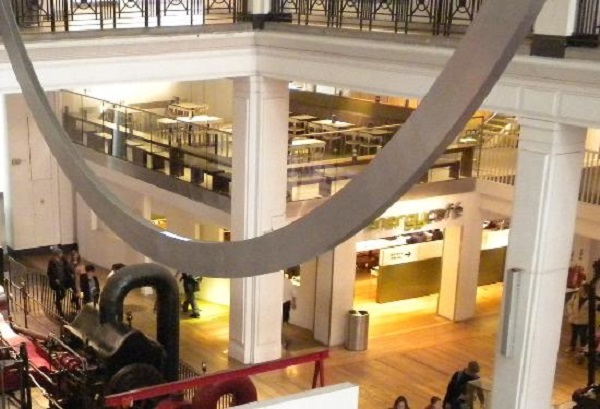After eight years of waiting, visitors to London’s Science Museum can finally enjoy the institution’s biggest-ever project after its new history of medicine gallery was opened.
The display, comprising more than 3,000 pieces in five rooms across the first floor of the museum in Kensington, West London, cost 24 million pounds ($30.8 million) and covers everything from prehistoric death rituals to specially commissioned artworks by some of Britain’s leading contemporary artists.

Medicine
The Wellcome Galleries, as the collection is officially known, is made up of items on long-term loan from the Wellcome Foundation, a politically and financially independent foundation active in the field of medical research and education. It covers all countries and eras, to emphasize the universality of the importance of health.
“It’s something all of us can relate to, so the galleries reflect that, telling stories from across the globe and across the centuries, which are relevant to us all,” McEnroe explained.
World’s Top Galleries
Quinn has exhibited at many of the world’s top galleries and in 2004 became the first artist invited to fill the empty fourth statue plinth in London’s Trafalgar Square, with his marble statue of artist Alison Lapper, who was born with no arms and shortened legs, posing when she was pregnant. This image was also used in the opening ceremony of the 2012 London Paralympic Games.
Self-Conscious Gene is a representation of model Rick Genest, known as Zombie Boy, who having recovered from a brain tumor, had his entire body covered with tattoos.
“In previous civilizations, people had tattoos in specific ritual settings, to show you were a member of the group, it was very anthropological. Nowadays with no overarching religion or ideology, people make their own spiritual journeys and write them on their bodies. I think that’s a very interesting element of what’s happening in the world today and how we relate to our bodies.”
Quinn’s father was a physicist and he grew up fascinated by scientific instruments, and making frequent visits to the Science Museum, which left a lasting impression.
Last Words
“I love this museum, I came here as a child and I know how formative that was,” he said. “I still remember images from then, so what I’m doing is creating an image which generations of school children can remember in years to come when they’re older.
“When you’re a child, images are so important, they make you think about the world in a different way and question things. Once you look at Zombie Boy, you’ll look at the other anatomical models in a more accessible way too and won’t find them so difficult.”












